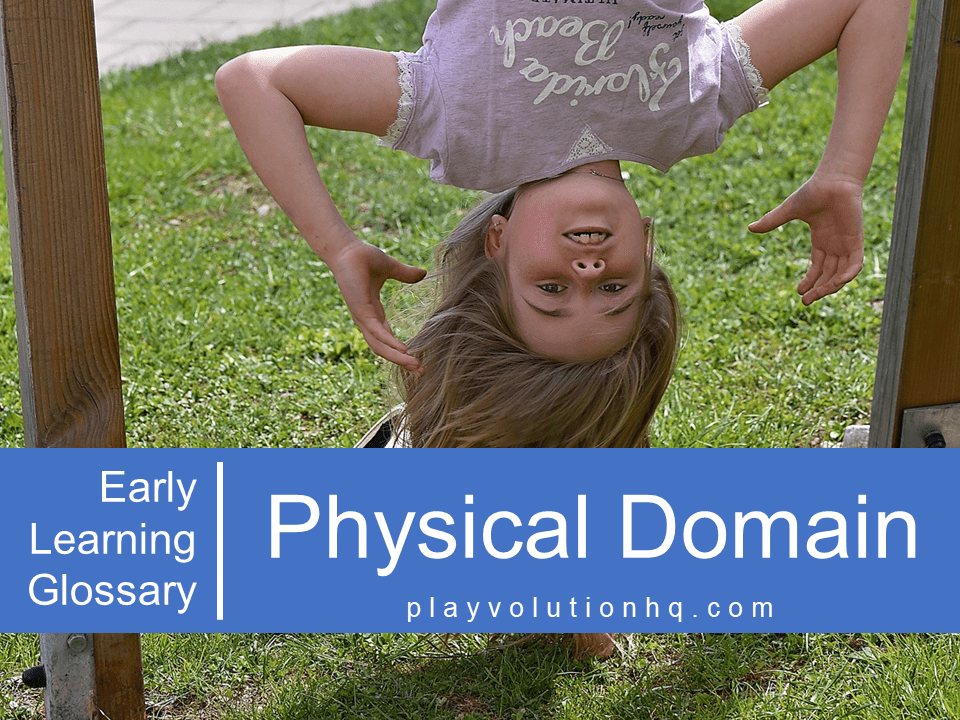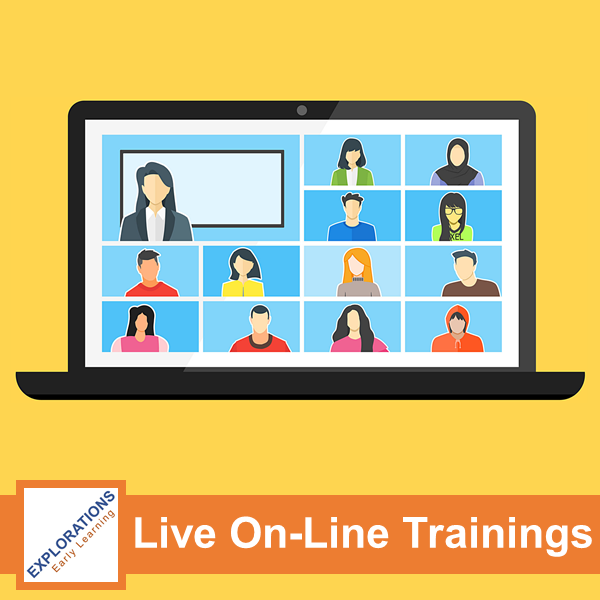
Table of Contents
The Physical Domain refers to a child’s physical growth and development, including gross motor skills (larger movements involving arms, legs, and whole-body motion) and fine motor skills (smaller movements involving hands and fingers). This domain is focused on how children build muscle strength and control, learn to use their bodies effectively, and progress in their physical abilities.
Why It’s Important
Physical development in children is crucial for several reasons:
- Sensory Integration–The eight sensory systems feed information to the brain, connecting it to the world. Physical activity is vital in developing and refining those sensory systems.
- Foundation For Learning–Physical development lays the groundwork for cognitive development. Motor skills development influences a child’s ability to explore and interact with their environment, supporting learning and mental growth.
- Health And Well-Being–Developing strong gross and fine motor skills promotes physical health and well-being. It encourages an active lifestyle and helps prevent issues related to sedentary behavior.
- Independence And Self-Care–Mastering physical skills allows children to become more independent in self-care tasks such as dressing, eating, and personal hygiene.
Key Components Of The Physical Domain
The following are key elements of the physical domain:
- Gross Motor Skills–These skills involve using large muscle groups and enable activities like crawling, walking, running, jumping, climbing, and balancing. Gross motor skills are fundamental for overall physical coordination and play a crucial role in a child’s ability to engage in physical activities.
- Fine Motor Skills–Fine motor skills involve smaller muscle movements, particularly those of the hands and fingers. Examples include grasping objects, drawing, writing, using scissors, buttoning clothes, and manipulating small items. Fine motor skills are essential for tasks that require precision and coordination.
- Sensory Integration–The Physical Domain also encompasses developing and fine-tuning the body’s eight sensory systems. Active bodies build well-integrated vestibular, proprioceptive, interoceptive, tactile, gustatory, auditory, olfactory, and vision systems

Developmental Milestones In The Physical Domain
Here’s a breakdown of common developmental milestones in the Physical Domain of child development:
Infancy (0-12 months)
- Lifts head and chest while lying on stomach (around 3 months)
- Rolls over from stomach to back and vice versa (around 4-6 months)
- Sits without support (around 6-8 months)
- Crawls on hands and knees (around 6-10 months)
- Pulls to stand and stands briefly, holding onto support (around 9-12 months)
- Begins to cruise along furniture (around 9-12 months)
Toddlerhood (1-3 years)
- Walks independently (around 12-15 months)
- Climbs stairs with assistance (around 18 months)
- Runs and starts to jump in place (around 2 years)
- Kicks a ball (around 2 years)
- Begins to use a spoon and fork (around 2 years)
- Builds towers with blocks (around 2-3 years)
- Scribbles and imitates drawing basic shapes (around 2-3 years)
Preschool (3-5 years)
- Climbs well (e.g., playground structures) (around 3-4 years)
- Pedals a tricycle (around 3-4 years)
- Hops and stands on one foot for a few seconds (around 4-5 years)
- Catches a ball with arms extended (around 4-5 years)
- Copies more complex shapes and letters (around 4-5 years)
- Uses scissors to cut along lines (around 4-5 years)
School Age (6-12 years)
- Runs fast, skips, and jumps rope (around 6-7 years)
- Rides a bicycle independently (around 7-8 years)
- Throws and catches a ball with ease (around 8-9 years)
- Demonstrates improved balance and coordination (around 9-10 years)
- Refines fine motor skills for writing and drawing (e.g., cursive writing) (around 10-12 years)
These milestones are general guidelines and vary from child to child. Consult with a pediatrician or early childhood development specialist for personalized guidance and support if you have concerns about a child’s physical development.

Supporting Physical Domain Development
There are many ways to support the physical domain of child development. Here are some examples:
- Provide Opportunities for Movement–Encourage active play and physical activities that challenge gross and fine motor skills.
- Encourage Heavy Work– Heavy work refers to activities that push or pull against the body or involve carrying. Such activity builds muscle strength and control and gives the sensory systems a good workout.
- Avoid Sedentariness–Children are not designed to sit still. They are built to run, jump, spin, roll, climb, leap, wrestle, skip, flip, flop, and more.
- Model and Encourage Healthy Habits–Be a role model by engaging in physical activities yourself and encouraging healthy habits like regular exercise and balanced nutrition.

Physical Domain Wrap-Up
Understanding the Physical Domain of child development is vital for creating environments and experiences that nurture children’s overall growth and well-being. Fostering physical development lays a strong foundation for children to thrive in all areas of their lives.
Contribute content to Playvolution HQ
Brought to you by Explorations Early Learning
Thoughts On This Entry?
I’d love to hear your thoughts on improving this entry and suggestions for additional glossary additions in the comments below. You can also contact me with comments or concerns.
Browse Trainings
Post Author
Jeff Johnson is an early learning trainer, podcaster, and author who founded Explorations Early Learning, Playvolution HQ, and Play Haven.


Leave a Reply